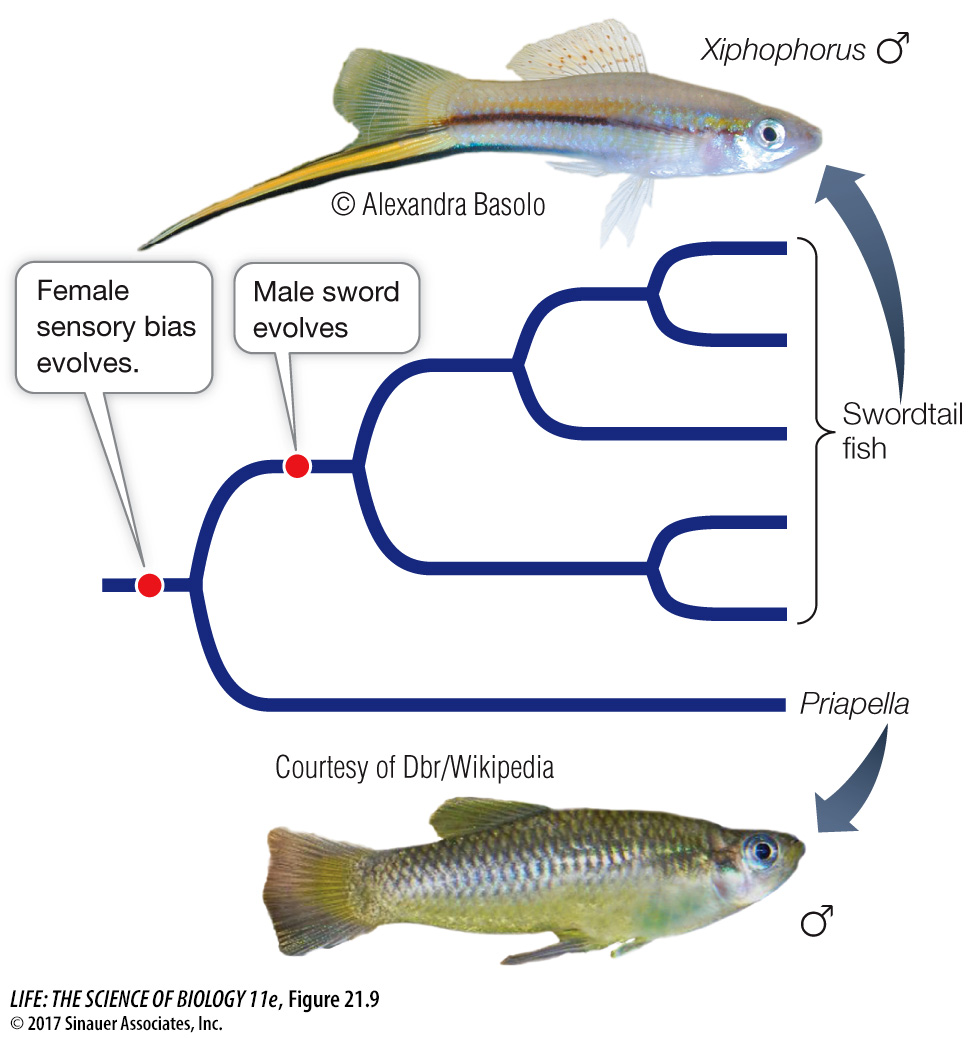Phylogenies allow us to compare and contrast living organisms
Male swordtails—a group of fish in the genus Xiphophorus—have a long, colorful tail extension, and their reproductive success is closely associated with this appendage. Males with a long sword are more likely to mate successfully than are males with a short sword (an example of sexual selection; see Key Concept 20.2). Several explanations have been advanced for the evolution of this structure, including the hypothesis that the sword simply exploits a preexisting bias in the sensory system of the females. This sensory exploitation hypothesis suggests that female swordtails had a preference for males with long tails even before the tails evolved (perhaps because females assess the size of males by their total body length—including the tail—and prefer larger males).
To test the sensory exploitation hypothesis, phylogenetic analysis was used to identify the relatives of swordtails that had split most recently from their lineage before the evolution of swords. These closest relatives turned out to be fish in the genus Priapella. Even though male Priapella do not normally have swords, when researchers attached artificial swordlike structures to the tails of male Priapella, female Priapella preferred those males. This result provided support for the hypothesis that female Xiphophorus had a preexisting sensory bias favoring tail extensions even before the trait evolved (Figure 21.9). Thus a long tail became a sexually selected trait because of the preexisting preference of the females. The phylogeny allows us to understand when the trait evolved relative to the change in female preference.

Figure 21.9 The Origin of a Sexually Selected Trait The tail extension of male swordtails (genus Xiphophorus) apparently evolved through sexual selection, as females mated preferentially with males that had long “swords.” Phylogenetic analysis reveals that Priapella split from the swordtails before the evolution of the sword. The independent finding that female Priapella prefer male Priapella with an artificial sword further supports the idea that this appendage evolved as a result of a preexisting preference in females.
